Health
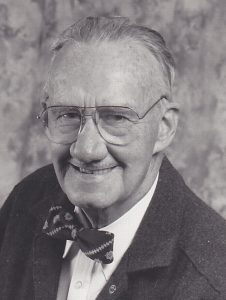 I am amazed at the number of inventions that have changed our world, but when they were invented, they were not what the inventor was trying to invent. Basically, while trying to make one thing, or repair something, the inventor stumbled on something else, and made an important discovery. Wilson Greatbatch was an inventor who had been quite successful, having 150 patents to his credit at the time of his accidental invention. Overall, in his lifetime, he was credited with an astonishing total of 325 patents for his many great brainstorms. Patents aside, Greatbatch will be best remembered for the invention and development of the first implantable pacemaker, a device which has improved, saved, and extended countless lives since its first use in 1960. Worldwide, approximately three million people currently benefit from Greatbatch’s discovery, with an additional 600,000 being implanted every year. It was not what he had be trying to make, however.
I am amazed at the number of inventions that have changed our world, but when they were invented, they were not what the inventor was trying to invent. Basically, while trying to make one thing, or repair something, the inventor stumbled on something else, and made an important discovery. Wilson Greatbatch was an inventor who had been quite successful, having 150 patents to his credit at the time of his accidental invention. Overall, in his lifetime, he was credited with an astonishing total of 325 patents for his many great brainstorms. Patents aside, Greatbatch will be best remembered for the invention and development of the first implantable pacemaker, a device which has improved, saved, and extended countless lives since its first use in 1960. Worldwide, approximately three million people currently benefit from Greatbatch’s discovery, with an additional 600,000 being implanted every year. It was not what he had be trying to make, however.
Wilson Greatbatch was born the son of British immigrants, Warren and Charlotte Greatbatch, in Buffalo, New York, in 1919. He attended school at West Seneca, New York. He had many interests, among which were the sea scouts and amateur radio. Greatbatch was just 16 years old when he received his amateur radio license. During World War II, Greatbatch served in the US Navy as an aviation chief radioman. He took advantage of the 1944 GI Bill to attend Cornell University, where he studied electrical engineering. He graduated in 1950 and began a teaching career at the University of Buffalo in 1952.
It was in 1956, while working at Buffalo, that he made his most important discovery. While it was his most important discovery, it was also the result of an error. Greatbatch had been working on a heart-rhythm recorder, but he mistakenly added an incorrect electronic component. The resulting device produced electrical pulses, instead of simply recording the rhythm. Recalling the event later, he said “I stared at the thing in 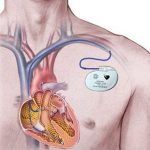 disbelief.” Greatbatch realized immediately that he had found a way to electrically simulate and stimulate a heartbeat. It was to become the most important invention of his life, and one that millions of people would be eternally grateful to him for “stumbling upon.”
disbelief.” Greatbatch realized immediately that he had found a way to electrically simulate and stimulate a heartbeat. It was to become the most important invention of his life, and one that millions of people would be eternally grateful to him for “stumbling upon.”
Of course, Greatbatch didn’t make the first pacemaker, but the prior models were bulky, external units which required the use of mains power, basically they had to be plugged into the wall…not conducive to leading an active life. At that time, battery technology was not advanced enough to allow the earlier units to be implanted, and my guess is that they were also big and bulky. Over the following two years Greatbatch managed to miniaturize and package the device so that it could be implanted. In May of 1958, he gave a successful demonstration of the invention in a dog. By 1960 the pacemaker had been implanted in the first human patient, a 77 year old man, who went on to live for another 18 months…not bad for a 77 year old heart patient.
A patent for the implantable pacemaker was granted in 1962, and in 1970 Greatbatch founded Wilson Greatbatch Ltd, which was later renamed now Greatbatch Inc, a company which continues to develop and manufacture lithium-based batteries for pacemakers. Greatbatch himself however, despite now having extensive offices and laboratory facilities, preferred to continue his research at his home garage workshop. He was always a tinkerer, and as he said in an interview with the Associated Press, “Nine things out of 10 don’t work, but the 10th one will pay for the other nine”. When he was asked about the change in quality of life that the pacemaker brought, Greatbatch told his local Buffalo newspaper in 1984, “I think one of my first and most gratifying realizations of what a pacemaker could do was in observing the reactions of elderly people to their grandchildren. People with heart disease generally don’t have enough blood supply to their brains and couldn’t respond before to the bantering of kids.”
Greatbatch was presented with many awards during his lifetime. In 1983 the National Society of Professional 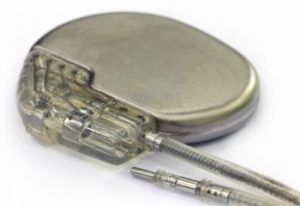 Engineers selected the pacemaker as one of the greatest contributions to society of the previous 50 years. In 1998 Greatbatch was inducted into the National Inventors’ Hall of Fame in Akron, Ohio, alongside his hero Thomas Edison. This was followed, in 2001, by the granting of the highest honor from the National Academy of Engineering, shared with his peer Earl Bakken, who invented the external pacemaker. Greatbatch’s autobiographical account of his discovery, The Making of the Pacemaker: Celebrating a Lifesaving Invention, was published in 2000. Wilson Greatbatch died at the good old age of 92 on September 27, 2011. Greatbatch served as an elder at Clarence Presbyterian Church, where he also sang in the church choir and taught Sunday school.
Engineers selected the pacemaker as one of the greatest contributions to society of the previous 50 years. In 1998 Greatbatch was inducted into the National Inventors’ Hall of Fame in Akron, Ohio, alongside his hero Thomas Edison. This was followed, in 2001, by the granting of the highest honor from the National Academy of Engineering, shared with his peer Earl Bakken, who invented the external pacemaker. Greatbatch’s autobiographical account of his discovery, The Making of the Pacemaker: Celebrating a Lifesaving Invention, was published in 2000. Wilson Greatbatch died at the good old age of 92 on September 27, 2011. Greatbatch served as an elder at Clarence Presbyterian Church, where he also sang in the church choir and taught Sunday school.
 Shortly after my sister-in-law, Brenda Schulenberg lost a large amount of weight, she decided that she wanted to do something that she didn’t really get to do as a kid…ride a bicycle. Because her knees wouldn’t really allow her to work the pedals at that time, she looked into various kinds of bicycles. She considered the recumbent bicycle, but that didn’t work very well, because while she could sit in a chair-like position, the pedals still needed to be brought back toward her, meaning that her knees needed to bend quite a little bit.
Shortly after my sister-in-law, Brenda Schulenberg lost a large amount of weight, she decided that she wanted to do something that she didn’t really get to do as a kid…ride a bicycle. Because her knees wouldn’t really allow her to work the pedals at that time, she looked into various kinds of bicycles. She considered the recumbent bicycle, but that didn’t work very well, because while she could sit in a chair-like position, the pedals still needed to be brought back toward her, meaning that her knees needed to bend quite a little bit.
Finally, she settled on a strider. It was an idea she got from our nephew and niece, Eric and Ashley Parmely. When their kids were too little to pedal a bicycle, they got them a strider, which is a pedal-less bicycle. The child basically sits on the seat, but runs the bicycle along using their feet for power. The seat is low enough to allow 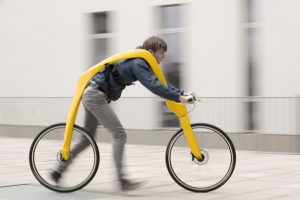 the child to have control, so they don’t fall over. It was a perfect idea for Brenda as well, because it let her be on a bicycle, but not have to pedal, which her knees would not allow at that time. These days, with her excess weight all gone, Brenda has put the pedals back on her bicycle and she can ride it normally.
the child to have control, so they don’t fall over. It was a perfect idea for Brenda as well, because it let her be on a bicycle, but not have to pedal, which her knees would not allow at that time. These days, with her excess weight all gone, Brenda has put the pedals back on her bicycle and she can ride it normally.
Someone else apparently thought the pedal-less bicycle was a good idea too, but in my opinion, their “bicycle” idea pretty much defeats the purpose. The invention is called the Foot Powered Bike, but to me it looks like the “rider” is carrying the bike around. The bike basically wraps around the “rider” and there is no seat at all. There are handlebars, but no pedals, seat, 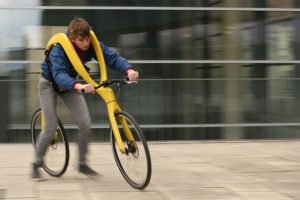 or bicycle chain. In the matter of the chain, I guess that you couldn’t get your clothes caught in something that isn’t there, but in looking at the way the “rider” must maneuver the bike, it seems to me that the contraption would be very easy to trip the “rider” up. In running along, the “riders” legs must straddle the back wheel. That is where the dangerous part comes in…in my mind anyway. Walking, or running, with a wheel between your legs is awkward, to say the least. I think most people would find their legs tangled up in that wheel, and any thought of “riding” this contraption would be lost, but the strangest part of this is calling it a bike at all. No seat, no pedals, and no chain…yep, I call that defeating the purpose.
or bicycle chain. In the matter of the chain, I guess that you couldn’t get your clothes caught in something that isn’t there, but in looking at the way the “rider” must maneuver the bike, it seems to me that the contraption would be very easy to trip the “rider” up. In running along, the “riders” legs must straddle the back wheel. That is where the dangerous part comes in…in my mind anyway. Walking, or running, with a wheel between your legs is awkward, to say the least. I think most people would find their legs tangled up in that wheel, and any thought of “riding” this contraption would be lost, but the strangest part of this is calling it a bike at all. No seat, no pedals, and no chain…yep, I call that defeating the purpose.
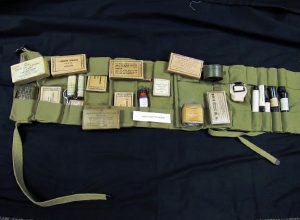 During World War II, if a man was a conscientious objector, things were…difficult. Things like that were not an automatic get out of the war card. Unless they had some necessary skill that would keep them stateside or in an office, they were signed up as a medic. Most of those men thought that was a good place for them, since the would be saving lives and not taking them, but I’m not sure who got it worse. The infantry or the medics.
During World War II, if a man was a conscientious objector, things were…difficult. Things like that were not an automatic get out of the war card. Unless they had some necessary skill that would keep them stateside or in an office, they were signed up as a medic. Most of those men thought that was a good place for them, since the would be saving lives and not taking them, but I’m not sure who got it worse. The infantry or the medics.
The men of the infantry usually considered the conscientious objectors to be cowards. That is not really the way a guy wanted to go into the army, but if they were seriously conscientious objectors, it was a calling they took seriously. 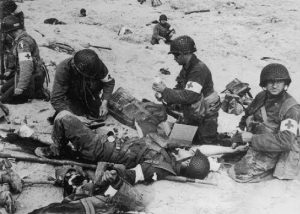 It was not, however, an easy job or the easy way out of combat. The difference between the infantrymen and the medics was that during combat, the infantrymen did their best to stay down, so the weren’t hit. The medics, on the other hand, ran into the fire to treat the wounded, and bring in the dead. It was no easy job.
It was not, however, an easy job or the easy way out of combat. The difference between the infantrymen and the medics was that during combat, the infantrymen did their best to stay down, so the weren’t hit. The medics, on the other hand, ran into the fire to treat the wounded, and bring in the dead. It was no easy job.
The medics, like most soldiers coming into the army were young men…boys really. They were often 18 or 19 years old. The infantrymen had plenty of names for them. None of them were nice…or complimentary, but the medics that stayed medics…the ones who ran into the fire to care for a wounded soldier were given new names. They were finally called medic…or more often Doc. And they were respected. They were also called hero, brave, courageous, and other respectful names. The 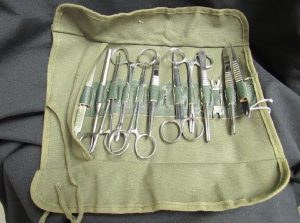 medics were not given the $10.00 per month extra that combat soldiers were given. That made the infantrymen furious. They collected money from each other to provide combat pay for their medics. The men refused to have their medics receive less.
medics were not given the $10.00 per month extra that combat soldiers were given. That made the infantrymen furious. They collected money from each other to provide combat pay for their medics. The men refused to have their medics receive less.
World War II saw eleven medics who received the Medal of Honor…as well as other medals. These men were wounded taking care of the men, and they were even killed saving the lives of the men in their care. These men were heroes, just like their counterparts in the infantry, and there isn’t an infantryman that ever fought, who would disagree.

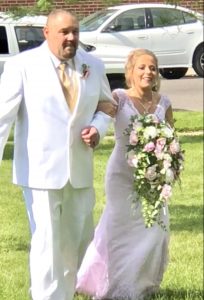 My nephew, Dave Balcerzak is a gifted computer programmer, and has helped many people with their computer issues, including me. I think the most awesome thing he has done is to rebuild old computers so that he can give them people who have a need for a computer, but cannot afford one. It is a noble thing to do, and very typical of Dave. He is a kind-hearted man, who wants to be able to help people in anyway that he can, and thankfully he has talents that allow him to be able to help a lot of people.
My nephew, Dave Balcerzak is a gifted computer programmer, and has helped many people with their computer issues, including me. I think the most awesome thing he has done is to rebuild old computers so that he can give them people who have a need for a computer, but cannot afford one. It is a noble thing to do, and very typical of Dave. He is a kind-hearted man, who wants to be able to help people in anyway that he can, and thankfully he has talents that allow him to be able to help a lot of people.
My niece, Chantel Balcerzak first met her now husband, Dave when they were kids in elementary school. She liked him immediately, and really never forgot him completely. Nevertheless, they both went their separate ways, and each married other people. After a number of years, families for both, and failed marriages, they met again, and it was like they were never apart. They were both free to marry now, so they did, and they created a blended family. Dave brought his two children, Keifer and Katy to the marriage, and Chantel brought her two living children, Jake and Siara to the marriage. Chantel also brought the memory of her angel baby, Alyssa, who Dave had never met, but because she belonged to Chantel, he loved her as much as any of the children…because that is the kind of man Dave is. Dave and Chantel have been blessed with three grandchildren, Izabella and Jaxx Harman, and Reece Balcerzak. They also have a bonus granddaughter, Alice Green, with whom Dave shares a birthday. And they have a grandson on the way. When I say that Dave has been blessed, I say that because I believe that Dave’s kindness and loving ways, have given him the reward of so many blessings.
Dave has been given one more blessing, and it is one that is of the type that is near to my heart…his heart. Dave developed so heart issues, that at one point caused him to have a stroke, which was caught by a CNA, while he was in the hospital. Her quick action left Dave with no lasting damage from the stroke. His heart, however, still needed some work. As the wedding of their daughter, Siara was coming and Dave was to walk 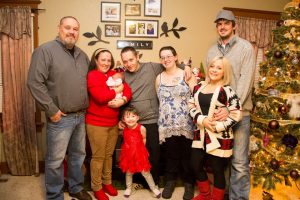
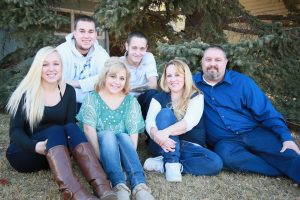 her down the aisle, he worried that he would not be able to do so, but God had another plan. An interesting procedure fixed his heart, and the man who had been only able to take a few steps without being out of breath, was able to walk Siara down the aisle. He is still healthy and very blessed indeed. Today is Dave’s birthday. Happy birthday Dave!! Have a great day!! We love you!!
her down the aisle, he worried that he would not be able to do so, but God had another plan. An interesting procedure fixed his heart, and the man who had been only able to take a few steps without being out of breath, was able to walk Siara down the aisle. He is still healthy and very blessed indeed. Today is Dave’s birthday. Happy birthday Dave!! Have a great day!! We love you!!
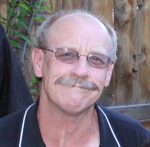
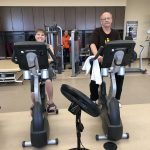 When you have been given a miracle in the form of a second chance in life, you don’t want to waste it. Just under nine months ago, on October 14, 2018, I received a second chance miracle. It wasn’t that I didn’t appreciate what I had or anything like that, but rather it was that I could have lost my husband, but by a miracle of God, I didn’t. That second chance miracle makes this particular birthday…my husband, Bob Schulenberg’s 65th, even more special than it would have otherwise been. A landmark birthday, like the 65th is always special, but we almost didn’t see it for Bob, so this birthday is almost like a re-birth. I find myself feeling a little more emotional than I might have otherwise been, because he is still here, and I realize how very blessed I am.
When you have been given a miracle in the form of a second chance in life, you don’t want to waste it. Just under nine months ago, on October 14, 2018, I received a second chance miracle. It wasn’t that I didn’t appreciate what I had or anything like that, but rather it was that I could have lost my husband, but by a miracle of God, I didn’t. That second chance miracle makes this particular birthday…my husband, Bob Schulenberg’s 65th, even more special than it would have otherwise been. A landmark birthday, like the 65th is always special, but we almost didn’t see it for Bob, so this birthday is almost like a re-birth. I find myself feeling a little more emotional than I might have otherwise been, because he is still here, and I realize how very blessed I am.
I think a second chance miracle tends to bring with it some added responsibilities, however. When you are given a second chance, you need to spend the time wisely. Things like working out and eating right come to mind. A heart attack can make people quit, but not Bob. I have been very proud of Bob’s determination to stay healthy and to make the most out of his second chance miracle. I have seen many people who didn’t want to do the rehab that was prescribed for them. I’ve heard all the possible excuses. It hurts!! It’s hard work!! I have other things to do!! All of these excuses simply say that the person speaking them doesn’t appreciate the second chance they have been given. Bob has never once said anything like that, but rather went faithfully to his cardiac rehab, and when he had completed the course, he decided to continue in the maintenance program and his own expense. Its not required, but Bob wanted his full life back, not just a much slower version of existence that he would have to settle for.
Bob and I love to hike, and we have plans to continue hiking for years to come…especially now that we are 
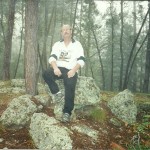 both retired, and we have more time and the freedom to go and hike when and where we want to. That is a very liberating thing for us, and we are very excited about it. Bob and I have decided that we aren’t going to let anything slow us down. The road ahead will not be an easy one, because hiking, being in good shape, and preparing for hikes is not easy. It’s a lot of work, but when you reach the top of that mountain trail, and you look out on the view from the top, you know that you don’t ever want to be stuck at the bottom of that hill. Today is Bob’s 65th birthday. Happy birthday Sweetie!! I love you!!
both retired, and we have more time and the freedom to go and hike when and where we want to. That is a very liberating thing for us, and we are very excited about it. Bob and I have decided that we aren’t going to let anything slow us down. The road ahead will not be an easy one, because hiking, being in good shape, and preparing for hikes is not easy. It’s a lot of work, but when you reach the top of that mountain trail, and you look out on the view from the top, you know that you don’t ever want to be stuck at the bottom of that hill. Today is Bob’s 65th birthday. Happy birthday Sweetie!! I love you!!
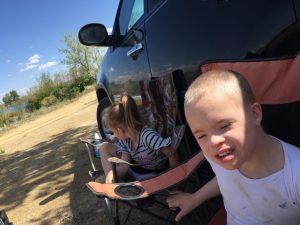 My grand nephew, Lucas Iverson is a sweet boy who is eager to learn new things. Lucas has Down Syndrome, but that has not slowed him down. Lucas is attending summer school, which will help his to stay on track with his studies. He is going to be in second grade next year and is doing very well in school. Because of Lucas learning disabilities, the school is working with innovative new ways of teaching him, and he is doing very well. They are using a picture communication book to teach him. Lucas uses Velcro stickers to ask for what he wants or to answer questions. The idea is that if Lucas needs to go to the restroom, there is a picture of a toilet. If he is thirsty, there is a picture of a glass of water. There are pictures of food, a bed, a car, a park…you get the picture. The best part is that it’s working for Lucas, and he is excelling at it.
My grand nephew, Lucas Iverson is a sweet boy who is eager to learn new things. Lucas has Down Syndrome, but that has not slowed him down. Lucas is attending summer school, which will help his to stay on track with his studies. He is going to be in second grade next year and is doing very well in school. Because of Lucas learning disabilities, the school is working with innovative new ways of teaching him, and he is doing very well. They are using a picture communication book to teach him. Lucas uses Velcro stickers to ask for what he wants or to answer questions. The idea is that if Lucas needs to go to the restroom, there is a picture of a toilet. If he is thirsty, there is a picture of a glass of water. There are pictures of food, a bed, a car, a park…you get the picture. The best part is that it’s working for Lucas, and he is excelling at it.

One of the things that is helpful to Lucas is to have a schedule that is followed religiously. Everyday schedule changes are difficult for him to deal with, so keeping him on a strict schedule helps him to stay on task. His learning works best in an environment of stability and organization, and since he is doing so well in school, his parents, Cassie and Chris Iverson don’t want anything to get in the way of that. Lucas has been an inspiration to them…and to many of the rest of us in the family too.
Of course, no kid wants to do nothing but study all summer, and Lucas is no exception. So, the family has been doing lots of fishing this summer. And they are planning to go to the fair to celebrate Lucas’ birthday. They have been doing lots of gardening too, and Lucas loves to play outside in his new backyard with his little sister, Zoey, and helping his mom with new  photography ideas, like the lens ball. But one of the biggest things that is going on with Lucas is that he is growing like a weed. He weighs 40 pounds and he is 40 inches tall. While that isn’t average for an 8 year old boy, it is pretty good for Lucas, who has struggled with his digestive system, and has been through multiple surgeries. Lucas is a strong, brave boy, who pushes through every time, and always with a smile on his face. The very best news is that he is doing so well in his health right now, that he doesn’t have to go back to the doctors for 6 months. Now that is something to celebrate. Today is Lucas 8th birthday. Happy birthday Lucas!! Have a great day!! We love you!!
photography ideas, like the lens ball. But one of the biggest things that is going on with Lucas is that he is growing like a weed. He weighs 40 pounds and he is 40 inches tall. While that isn’t average for an 8 year old boy, it is pretty good for Lucas, who has struggled with his digestive system, and has been through multiple surgeries. Lucas is a strong, brave boy, who pushes through every time, and always with a smile on his face. The very best news is that he is doing so well in his health right now, that he doesn’t have to go back to the doctors for 6 months. Now that is something to celebrate. Today is Lucas 8th birthday. Happy birthday Lucas!! Have a great day!! We love you!!
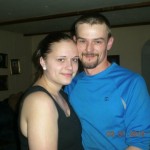
 My niece, Cassie Iverson is a woman of deep convictions. She has researched her positions on things, including vaccinations, education, government, and a number of other things, and she has made up her own mind how she feels about all these things. Whether you agree with her choices or not, I believe that everyone is entitled to their own opinions, and the right to make their own choices for their family, and especially for their children. Cassie and her husband, Chris have dealt with more medical issues with their son, Lucas, than anyone should ever have to, and they have done well with his upbringing. Having a child with disabilities is hard, but when those problems also include the need for many surgeries, it is really more than any parent should ever have to face. They are very much fighting for their child’s life and they are determined to win that battle. Any time a parent has to fight for the life of their child, I think they should be considered noble fighters.
My niece, Cassie Iverson is a woman of deep convictions. She has researched her positions on things, including vaccinations, education, government, and a number of other things, and she has made up her own mind how she feels about all these things. Whether you agree with her choices or not, I believe that everyone is entitled to their own opinions, and the right to make their own choices for their family, and especially for their children. Cassie and her husband, Chris have dealt with more medical issues with their son, Lucas, than anyone should ever have to, and they have done well with his upbringing. Having a child with disabilities is hard, but when those problems also include the need for many surgeries, it is really more than any parent should ever have to face. They are very much fighting for their child’s life and they are determined to win that battle. Any time a parent has to fight for the life of their child, I think they should be considered noble fighters.
Cassie have become a fund raising guru, and for anyone who has ever had to do and fund raising, you know how hard a job that is. Nevertheless, trips to Colorado for surgeries are expensive, and so sometimes you have to work hard to come up with the money for them. Cassie does what she has to do. It’s for their son, and that makes the work worth while. Anyone who has met Lucas knows what a sweet boy he is, and also that he is a fighter. Once you meet him, you can’t help but love him, and root for his victory in everything he has to deal with. While things are sometimes tough for Cassie and Chris, there are many good times too.
The take as many opportunities as they can to go camping, fishing, and photographing. Cassie loves to take pictures of nature, as well as having a business in photography where she takes family, baby, and graduation photographs. Those are great, but for me, it is the nature pictures that are amazing. Anyone can snap a picture of a mountain in the distance, but not everyone has an eye for it. If you have an eye for it, the scene really 
 jumps out of the photograph and makes you feel like you are right there. Cassie has that ability, and that is what makes her pictures great…not to mention that she has so many great nature scenes to photograph in Wyoming. She even sells her pictures, which gives other people the chance to see things through her eyes. Today is Cassie’s birthday. Happy birthday Cassie!! Have a great day!! We love you!!
jumps out of the photograph and makes you feel like you are right there. Cassie has that ability, and that is what makes her pictures great…not to mention that she has so many great nature scenes to photograph in Wyoming. She even sells her pictures, which gives other people the chance to see things through her eyes. Today is Cassie’s birthday. Happy birthday Cassie!! Have a great day!! We love you!!

 My sister-in-law, Brenda Schulenberg is a woman who is determined to accomplish her goals and dreams. She doesn’t let anything get in the way of getting her daily steps in, whether it is bicycling steps or foot steps, she reaches her goal of 25,000 steps a day…every day. If that means she gets up at 4:00 am to get to work at 8:00 am, then she does. Nothing gets in the way of her step count. At night, if she has been traveling during the day, and is a little behind in her steps, she simply doesn’t sit down until she finishes the steps. That means walking around her house for as long as it takes. Any place can be a trail, as long as you have room to walk around. Trails aren’t always outside, and Brenda utilizes any space necessary to complete her daily steps.
My sister-in-law, Brenda Schulenberg is a woman who is determined to accomplish her goals and dreams. She doesn’t let anything get in the way of getting her daily steps in, whether it is bicycling steps or foot steps, she reaches her goal of 25,000 steps a day…every day. If that means she gets up at 4:00 am to get to work at 8:00 am, then she does. Nothing gets in the way of her step count. At night, if she has been traveling during the day, and is a little behind in her steps, she simply doesn’t sit down until she finishes the steps. That means walking around her house for as long as it takes. Any place can be a trail, as long as you have room to walk around. Trails aren’t always outside, and Brenda utilizes any space necessary to complete her daily steps.
Brenda spent much of her life overweight and really unhealthy, and while most people wouldn’t want me to talk about that part of their lives, Brenda uses that part of her life, and the transition she has made to be an inspiration to others. She has set another goal for herself…to reach out to other people who are where she was…to let them know that it is never too late to change your life for the better. Getting healthy and fit is just a step away. Yes, it will take many steps, but the first step is the most important, because without the first step, you remain an overweight, unhealthy, couch potato. Of course, that first step…must be taken every day, if you are going to have to succeed. Most people when they get to that place, where their weight is out of control, and they have become unhealthy, decide that because of this health problem or that health problem, it is simply impossible for them to lose weight and become healthy again. Brenda is proof positive that they can. All it takes is much determination and that first step.
These days, Brenda enjoys things like traveling…by plane, train, or automobile. These are things she really couldn’t do before she lost the weight. She was so limited. Now she travels to different areas around Wyoming 
 and Colorado to speak to others about her story. Sometimes, all it takes to get someone started on the road to better health, is to see that someone else made it. Getting started is so hard, especially when you feel like you will never make it, but when you see someone like Brenda, who has turned her whole life around, you begin to feel like you can do it too. And that is what inspires Brenda…helping other people to succeed. Today is Brenda’s birthday. Happy birthday Brenda!! Have a great day!! We love you!!
and Colorado to speak to others about her story. Sometimes, all it takes to get someone started on the road to better health, is to see that someone else made it. Getting started is so hard, especially when you feel like you will never make it, but when you see someone like Brenda, who has turned her whole life around, you begin to feel like you can do it too. And that is what inspires Brenda…helping other people to succeed. Today is Brenda’s birthday. Happy birthday Brenda!! Have a great day!! We love you!!
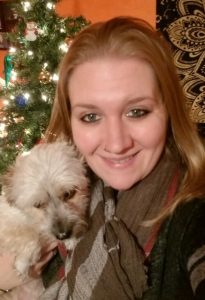
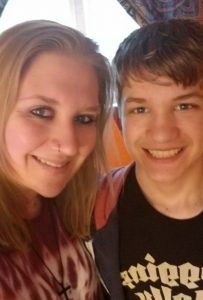 For some time now, my niece, Andrea Spicer has been a chef. She has cooked at several restaurants. These days she is at the Best Western Hotel in Rawlins, and she has been for quite a while. All her hard work is paying off, because she is in line for a promotion to the position of Assistant Kitchen Supervisor. I know she will get the promotion, and I am so happy for her. This is the work she has dreamed of, and the only work she has ever wanted to do.
For some time now, my niece, Andrea Spicer has been a chef. She has cooked at several restaurants. These days she is at the Best Western Hotel in Rawlins, and she has been for quite a while. All her hard work is paying off, because she is in line for a promotion to the position of Assistant Kitchen Supervisor. I know she will get the promotion, and I am so happy for her. This is the work she has dreamed of, and the only work she has ever wanted to do.
Of course, for Andrea, there is nothing more important than 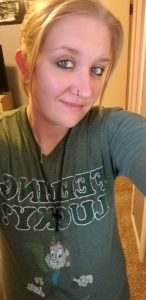 her son, Topher. They are truly best friends. Since his birth in 2005, Topher has been Andrea’s world. Andrea loves spending time with Topher, and says he couldn’t ask for a better kid. She feels very honored to be his mom. Topher has been her purpose in life for almost 14 years now, and he makes her more proud of him every day.
her son, Topher. They are truly best friends. Since his birth in 2005, Topher has been Andrea’s world. Andrea loves spending time with Topher, and says he couldn’t ask for a better kid. She feels very honored to be his mom. Topher has been her purpose in life for almost 14 years now, and he makes her more proud of him every day.
The biggest news for Andrea is that she has started a quest to a healthier life. She started her journey with the Keto eating plan, and in short order, she has lost over 30 pounds!!!! I think for any Chef, the hardest thing to do is to lose weight, because you are always around food. That makes Andrea’s success even better. Keto is an easy plan to follow though, and you never feel hungry or deprived. It is the plan I have been on for over a year and a half, so I know how Andrea feels about her new lifestyle. There is nothing quite like the rewards that come from perseverance and hard work. I am so proud of Andrea’s hard work, and so happy for her with her success. Keep it up Andrea!! You look great!! Today is Andrea’s birthday. Happy birthday Andrea!! Have a great day!! We love you!!
 These days, organ transplants are a fairly common event. It’s not that everyone is having them, but that many people who need one get it. Years ago, something like a failing liver was an instant death sentence. The doctors would try to find a way to heal the liver, but they knew that it was not likely to happen. I know that it was heartbreaking for the doctors, who became doctors to save lives, not to lose them.
These days, organ transplants are a fairly common event. It’s not that everyone is having them, but that many people who need one get it. Years ago, something like a failing liver was an instant death sentence. The doctors would try to find a way to heal the liver, but they knew that it was not likely to happen. I know that it was heartbreaking for the doctors, who became doctors to save lives, not to lose them.
The real game changer came in 1963, when Dr Thomas E Starzl of Denver, Colorado, performed the first successful liver transplant in history. The patient was a 48 year old man. Unfortunately, he only lived for 22 day, but in those 22 days, a door was opened. Yes, there were problems, and the patient died, but he also lived…with a liver that wasn’t originally his. That was a huge step in the transplant game, and because of that step, Starzl became known as “the father of modern transplantation.”
Between March 1 and October 4, 1963, Starzl attempted 5 human liver replacements. The first patient bled to death during the operation. The other 4 died after 6.5 to 23 days. The autopsies didn’t show rejection, but rather that the patients died of site infections. During this time, there were also single attempts at transplant, 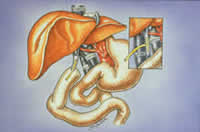 Francis D. Moore in September 1963 in Boston, and Demirleau in January 1964 in Paris. None were considered successful, but as I said. I would disagree, because while the patients died, they also lived. At this point, liver transplants on humans stopped until the summer of 1967. The operation was thought to be too difficult to ever be tried again, but Starzl refused to give up, and in 1967, he performed the first successful human liver transplant, at the University of Colorado Health Sciences Center. This one would be even be considered a success by Starzl. He had also performed the world’s first spleen transplant four months earlier in the same year. After that, transplants became everyday operations.
Francis D. Moore in September 1963 in Boston, and Demirleau in January 1964 in Paris. None were considered successful, but as I said. I would disagree, because while the patients died, they also lived. At this point, liver transplants on humans stopped until the summer of 1967. The operation was thought to be too difficult to ever be tried again, but Starzl refused to give up, and in 1967, he performed the first successful human liver transplant, at the University of Colorado Health Sciences Center. This one would be even be considered a success by Starzl. He had also performed the world’s first spleen transplant four months earlier in the same year. After that, transplants became everyday operations.

